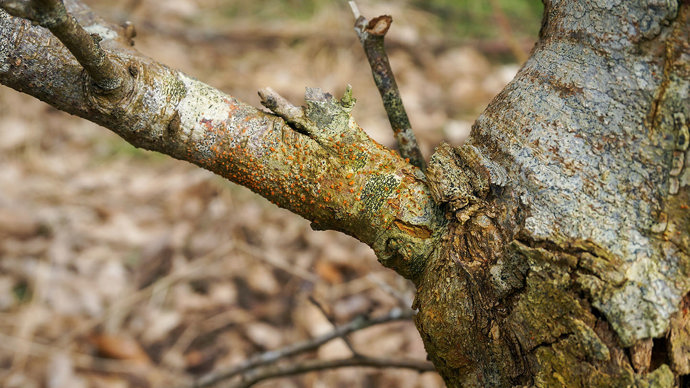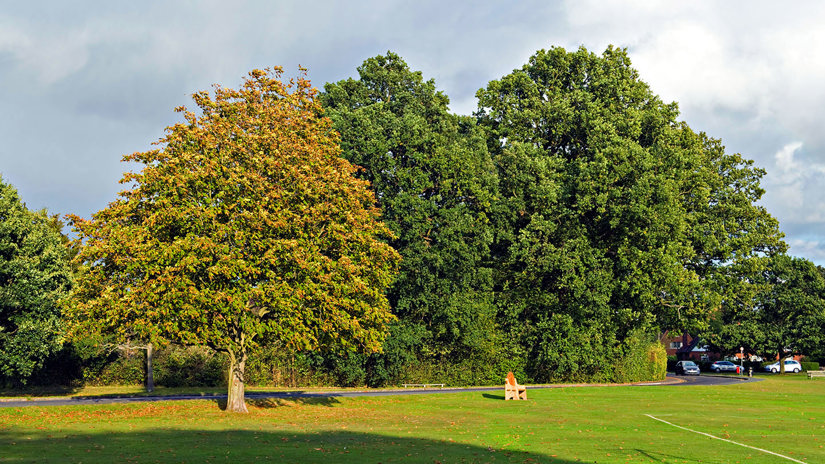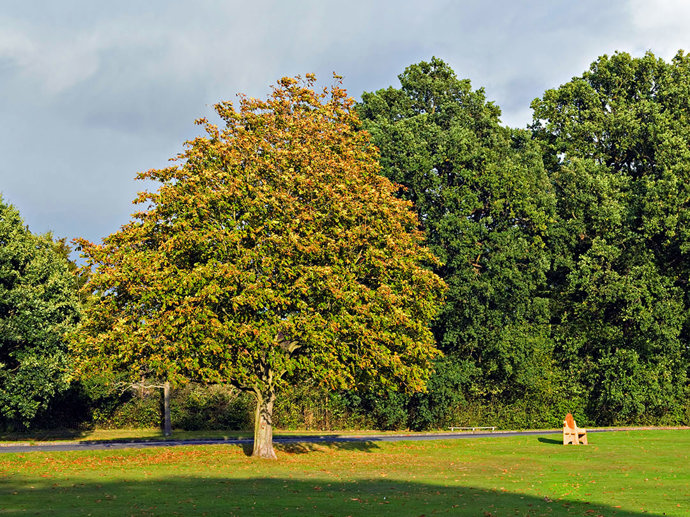Common name: sweet chestnut blight
Scientific name: Cryphonectria parasitica
What does it affect?: chestnut trees
Areas affected so far: isolated cases in southern and central England
Origin: Asia
This fungus infects trees through fissures or wounds, and it has the potential to have a significant impact on our historic sweet chestnut woods.
Common name: sweet chestnut blight
Scientific name: Cryphonectria parasitica
What does it affect?: chestnut trees
Areas affected so far: isolated cases in southern and central England
Origin: Asia
Sweet chestnut blight enters the tree through wounds and fissures. In cases where the tree has been grafted it occurs around the grafting point.
Symptoms include:
Sweet chestnut blight is a fungus that attacks the bark of chestnut trees.
Sweet chestnut blight devastated chestnut forests in the eastern US during the first half of the 20th century. It is estimated that it killed 3.5 billion trees after being imported from Asia.
It was accidentally imported to Italy in the 1930s and has been spreading in Europe since.

Credit: Ana Perez Sierra, Forest Research
The disease was first discovered in the UK in 2011, then another two outbreaks occurred in 2017 in Devon, Dorset and south-east London. It most likely spread through the import of infected plants from mainland Europe.
Sweet chestnut blight can kill a tree within a few years, but it seems to be slow moving here in the UK. Infections seem to stay within planted populations of infected trees rather than spreading out rapidly. That said, the introduction of more infected trees from abroad could speed up any spread.
A positive is that there is a natural phenomenon associated with sweet chestnut blight called ‘hypovirulence’. This is when the fungus is infected by a naturally occurring virus which makes it less aggressive by limiting the growth of the pathogen in the bark and prevents it from producing spores. This allows the trees to recover from infection.
To combat the spread and introduction of pests and diseases like sweet chestnut blight we have:


We are fighting back against pests and diseases. Find out what we're doing to prevent the spread and protect the UK’s trees.
More pests and diseases: